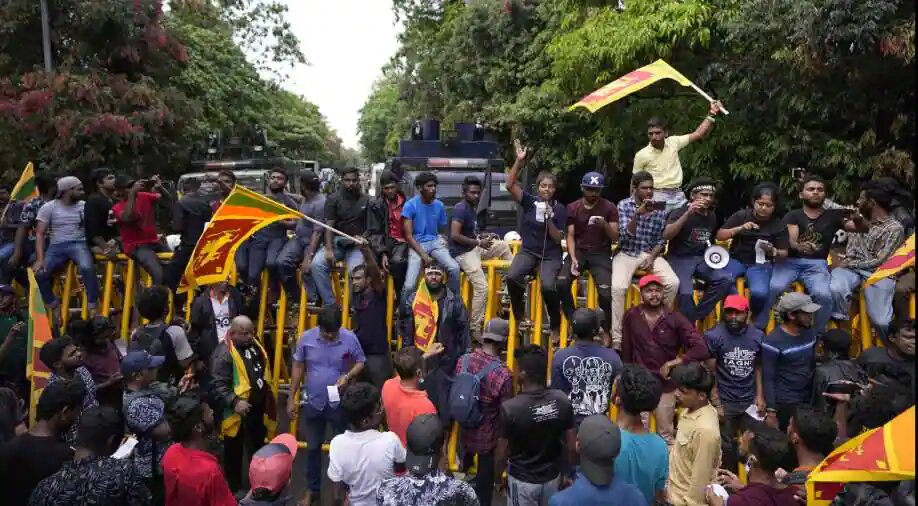
Lankan crisis, uprising could break historical Sinhala-Tamil barriers

Thirteen years ago, when the Sri Lankan Army defeated the LTTE and the movement for a separate Eelam evaporated, the Rajapaksas had a great opportunity to get their names honourably engraved in Sinhalese history.
Instead, as it has turned out, their names are now part of an inglorious chapter that the Sinhalese, alongside the Tamils, would quickly like to forget.
So what went so horribly wrong for the victorious Rajapaksas? In the run up to May 2009 that climaxed the decades old fight for secession by a section of Tamils, Mahinda Rajapaksa as president and his brother Gotabaya, then the Defence Secretary, helmed the defeat of the LTTE. They were aided by extraneous factors including India’s hands-off approach and China’s eagerness to help Colombo militarily.
Also read: All eyes on Sajith Premadasa, who could be the next Lankan President
The Rajapaksas could have used the enormous goodwill among the Sinhalese majority to enjoy their victory gracefully and display magnanimity in their treatment of common Tamils. Instead, Colombo’s campaign did not end with the decimation of the LTTE’s top leadership including the entire family of its chief Velupillai Pirabakaran.
Many Tamils were hunted down by security forces and jailed merely on suspicion of being separatist. Scores disappeared after the army and military intelligence picked them up for questioning. The climate of fear, acrimony and hostility turned the country’s north and east into a veritable Tamil ghetto. The government also resorted to large-scale resettling of Sinhalese in Tamil areas in an attempt to change the demography in the north and east.
Unlike in countries like South Africa and Rwanda, which moved towards genuine reconciliation after apartheid and the Tutsi genocide respectively, in Sri Lanka the Rajapaksa government carried recrimination on its sleeve. The government half-heartedly tried to set up state-backed tribunals to investigate allegations of human rights abuse of Tamils during and after the conflict. But no credible findings came of it.
In its international relations, the Rajapaksas bypassed traditional ally India and moved closer to China. Under Beijing’s Belt and Road Initiative (BRI), the government of Mahinda invited Beijing to develop infrastructure without even examining whether the country really needed them. In the process the Hambantota Port Development and the Colombo port project, among others worth billions of dollars, came up dragging the country into a deep debt with China.
Also read: Sri Lanka in uncharted territory; on the brink of anarchy
Quite unexpectedly, Mahinda Rajapaksa lost the election for presidency in 2015. But the incumbent government under Maithripala Sirisena could not do much to overturn the slew of decisions taken by its predecessor. In end-2019, Mahinda’s brother Gotabaya was elected president.
A few months later, in early 2020, Covid pandemic struck the world, and tourism-dependant Lanka was particularly hit. Travel globally came to a grinding halt and the country was left without incoming foreign exchange, which it required for the import of almost everything, including essential commodities.
Completely misreading the situation, Gotabaya in May 2021 announced an abrupt ban on the import of chemical fertilisers and pesticides. He did this with a view to making agriculture in Sri Lanka 100 percent organic. As with other decisions, there appeared no systematic planning or preparation.
Also read: Public anger palpable as Gotabaya actually goes
Already reeling from the impact of the Covid pandemic the move affected agriculture deeply, plunging the country into a fresh crisis. At least two million farmers were reportedly affected while foodgrain production plunged by around 20 percent.
With foreign exchange drying up, Gotabaya saw the economy collapse around him. As of May this year, the country’s foreign debt was in the range of $51 billion dollars while its foreign exchange reserves amounted to a mere $25 million.
The Sinhala hero’s decisions had singed everyone including his strong support base. The crisis did not differentiate between the Sinhalese and the Tamils. The world watched, shocked and awed, as Lankans seemed to forget their mutual ethnic differences and rose up, largely peacefully, to dislodge the government.
Also read: US Ambassador urges political fraternity to ensure peaceful transfer of power
The Rajapaksas’ government literally came crashing down solely due to the direct intervention of common people. It may have unwittingly served to bring together the two major communities – Sinhalese and Tamils – in their opposition to the Rajapaksa dispensation. While it may be tempting to foresee a possible reconciliation between the two communities, what is obvious is that the force of the ongoing upsurge against an established hardline, pro-Sinhala, pro-Buddhist state is bound to have spillovers.
The churning is still very much on and the situation is too fluid to predict precise outcomes. But, there is the possibility that a common cause – one of survival – could bring together the Sinhalese and Tamils. The Rajapaksas, unwittingly may have exposed their vested interests, myopic politics and sectarian decision-making – all serving to push Sri Lanka off the edge.
It would be foolhardy to expect a quick turnaround for the country, neck-deep in an existential crisis. A lot depends on who takes over governance at this point.
As in other similar upsurges in history, most recently during the Arab spring, a spontaneous uprising can willy-nilly fall into the hands of a lurking deep state that is always looking to protect the status quo. Level-headed Lankans, will hopefully, carry enough influence to work their way around that trap.


